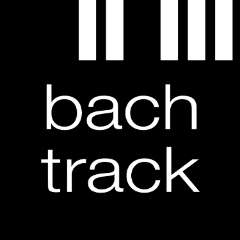The enormous benefits of a good music education are well-recognised, but very few music groups truly develop the key musical skills of a child to a high level while still maintaining enjoyment. But it can be done. The Szilvay Foundation, a charity founded by Dr Géza Szilvay 35 years ago, has been teaching young children using the Colourstrings approach, based on educational principles laid down by the Hungarian composer and educator Zoltán Kodály. The approach has been widely praised by music professionals around the world. Colourstrings offers children an opportunity to develop outstanding music skills and long-lasting success by engendering a love and genuine understanding of music. Many children who start this way are still playing ten or more years later, achieving a very high standard.
The approach to training starts in the music kindergarten where babies as young as 6 months take an active role and it can lead to instrumental tuition (strings, piano, guitar, flute) from 5-6 years, where there is an exceptionally low drop-out rate. The time required is not extensive: typically, a child will attend one lesson per week of 30 to 45 minutes. We are convinced that starting music young gets the maximum benefit in the long term. We prepare our children musically long before they begin an instrument, which makes the instrumental tuition much easier. Music in the heart of a family can bind it together, and once music is in a family, it usually continues to the next generation.
Multi-sensory education
In multi-sensory kindergarten classes, the youngest children learn to hear and feel the pulse, become acquainted with pitch through singing very simple songs, listen to classical music, move to live music, sing and play simple untuned percussion instruments to traditional folk and nursery songs, dance and play many different games. In so doing, they learn all the basic components of music: pitch (high/low), rhythm (long/short), tempo (slow/fast), dynamics (soft/loud), mood/character, form and style.
As they progress, their basic skills are gradually refined; rhythm names (TA/TI etc) are learnt from 3-4 years; solfa (do-re-mi) and handsigns come from 4-5 years until, on average, by the end of their 4-5 year (reception age children) they -
- can keep a pulse
- clap simple rhythms
- use solfa, handsigns and rhythm names to ‘decode’ music
- keep an ostinato (a constantly repeated figure under a tune)
- have some inner-hearing (the ability to write down music that they hear and conversely, to hear in their head music they see written down)
- can read and write simplified notation
- can hold a part in two-part music (polyphonic hearing)
- have a large repertoire of songs from many countries
- have confidence to sing solo
- understand music’s building blocks and how to manipulate these to produce their own music
- experience music socially, understand the importance of sharing and working together
- are excellent listeners in any learning situation, which helps them achieve more
- have begun to develop a lasting love of classical and folk music that will enrich their lives, satisfying them at a deep emotional level
- can listen critically and suggest improvements to their own and others’ work
- are prepared for success because of their successful experiences throughout their learning from the very beginning
Happily, because of the teaching style, we can challenge every child at the right level within a mixed ability group: no-one has to fail. We spark the beginnings of a deep love of music, starting with simple folk song and classical music. We don’t believe in giving in to the ‘pop’ route: there are so many other things children can do that are ultimately more fruitful and satisfying and anyway, they hear pop music all the time around them. We seek to provide an alternative, more ‘organic’ experience that nourishes and motivates children to be independent, skilled and happy.
How does the instrumental teaching work?
Our instrumental books progress in very small steps, ensuring success at every stage. Each string (octave on the piano) is symbolically coloured and given a character - e.g. bear, daddy, mummy, bird - and solfa aids tuning and note recognition. Many of the tunes they encounter are familiar to them from the Music Kindergarten, including traditional songs from many countries.
Singing goes alongside playing in the instrumental lessons and, interestingly, very few children resist singing (even boys). Singing reinforces the inner hearing. Inner hearing development gives children a vital reference point for knowing how a note will sound in relation to other notes: if they press the incorrect key on the piano, they will know it, because the sound will not correspond to the expected sound in their head. Teachers love to teach Colourstrings-trained children because their hearing is so much more acute: this particularly helps string players to play in tune.
I can think of no greater musical gift to a child than to start him or her off with Kodály and Colourstrings. They have changed my life and that of many others - teachers, parents and children. I really do believe that this is the future of music education.
© Deborah Harris 2008
Deborah Harris is a professional musician who has worked with Colourstrings for 15 years and is Principal of the North London Centre. Deborah can be contacted for advice on matters relating to early years music education on 020 8444 9435 or by emailing deborah@nlcolourstrings.co.uk (website www.nlcolourstrings.co.uk)
To find out more about your nearest Colourstrings classes or about training as a Colourstrings teacher(music kindergarten or instrumental) please call/email The Szilvay Foundation on 020 8330 7500 / colourstrings@aol.com or contact Deborah Harris.


